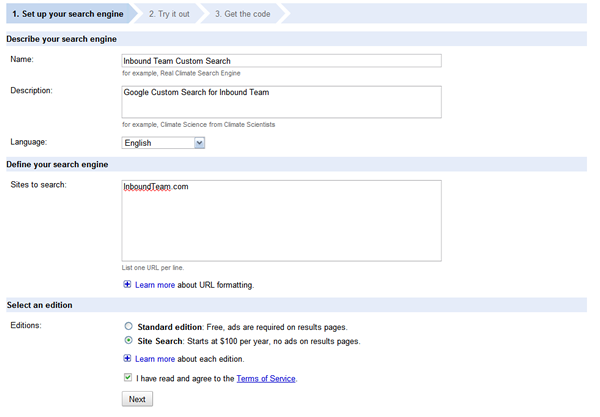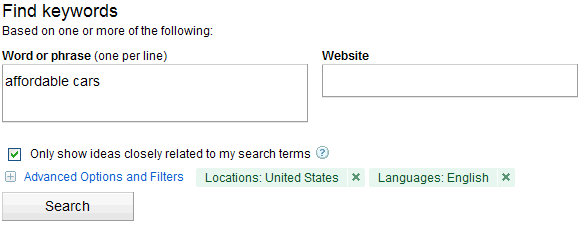Having a search box on your website is helpful for several reasons:
- Your visitors can easily find the information they are seeking
- You can analyze the search queries for insights into why people are visiting your site
- For sites with a lot of content (And all Hubspot sites should have a lot of content), your visitors can find information that they wouldn't naturally discover using your navigation
How to create a Google search engine for your Hubspot website
- To create a Custom Search Engine with Google, go to: http://www.google.com/cse/
- If you haven't already created a Custom Search Engine, click the big Blue button -- the one labeled "Create a Custom Search Engine.
After you've set one up, you can click the manage your existing search engines link.

- Google will ask you to sign in. You'll have to use a "Google Account." This can be any email address that is registered with Google -- It does not have to be a gmail address.
- Google will show you a form like the one below. The name and description is only for your internal use.
Make sure you put in the name of your site without the www. This way, Google will search all your sub-domains. Don't worry, this can all be changed later.
Most Hubspot users will want to buy the Site Search that starts at $100 per year. There is a free version, but Google will usually show your competitors in the search results -- not what you want!
If you have a larger site with a lot of searches, you may need to buy one of their more expensive versions.

- Click Next. Google will show you a Preview screen with a search box you can test out.
When you are finished testing, click Next again. - Google will ask for your contact information. Fill out the form, and click Next.
- Complete your purchase through Google Checkout.
That's it, you're finished! If you run into any trouble, please leave a comment or call us for help (800.609.9669).
On the last Google Checkout screen, there are links to:
Click the "Edit this search engine" link to go to the control panelto review and further customize your search box.
- Edit this search engine
- Go to this search engine's homepage
- View all of your search engines
If you've got HTML and CSS skills, Google will give you sample code that you can integrate with your Hubspot site.
If you need help setting this up with Hubspot, Contact us.












 Lately, I've answered several questions about how to select a Search Engine Optimization (SEO) vendor like this one from
Lately, I've answered several questions about how to select a Search Engine Optimization (SEO) vendor like this one from 